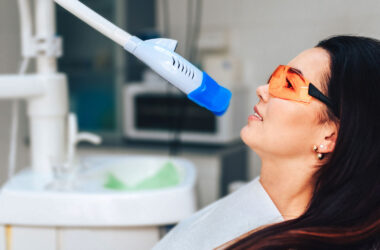Introduction: Riyadh’s Rise as a Hub for Robotic Aesthetics
Over the last decade, Riyadh has evolved into a regional powerhouse for aesthetic innovation, blending precision medicine with luxury-grade care. Among its most rapidly advancing fields is robotic hair transplantation, a domain where science, software, and surgical artistry converge to restore not just hair, but confidence and identity. The Saudi capital, long recognized for its cutting-edge medical infrastructure, has embraced next-generation systems like NeoGraft and ARTAS, reshaping how hair restoration is performed. These technologies represent the intersection of artificial intelligence, mechanical precision, and human aesthetic judgment. As clinics in Riyadh invest heavily in robotic capabilities, they are setting new benchmarks for accuracy, comfort, and natural-looking results in hair transplantation.
The Evolution of Hair Restoration: From Manual to Robotic Precision
Traditional hair transplant techniques relied heavily on surgeon skill and endurance. Early FUT (Follicular Unit Transplantation) involved linear incisions, leaving visible scars and extended recovery times. Later, FUE (Follicular Unit Extraction) introduced individual follicle harvesting, improving naturalness and comfort but demanding immense manual focus. The challenge was always consistency: even the most skilled surgeons experienced fatigue after extracting thousands of follicles. Robotics offered the solution machines capable of micro-level accuracy, consistent pressure control, and millimeter-perfect angling. Riyadh’s clinics quickly recognized that automation could elevate outcomes while preserving the artistry of the human hand. Today, robotic systems like NeoGraft and ARTAS represent not a replacement for surgeons, but an evolution of their precision.
Understanding NeoGraft: The Pioneer of Automated Extraction
Hair Transplant in Riyadh has seen remarkable advancements with technologies like NeoGraft, one of the first semi-automated FUE systems that brought unprecedented refinement to follicular extraction. The device uses pneumatic suction to gently remove grafts without damaging surrounding tissue, significantly reducing trauma compared to manual punching. This innovation appealed to Riyadh’s patient demographic professionals seeking discreet, scarless restoration with minimal downtime. NeoGraft’s closed harvesting system maintains follicle hydration throughout the procedure, improving graft viability. Moreover, its ergonomic design allows surgeons to perform large sessions efficiently, which is crucial for Saudi men experiencing advanced-stage hair loss. NeoGraft remains favored in many Riyadh clinics for its combination of automation, surgeon control, and natural aesthetic outcomes.
ARTAS Robotic System: The AI Revolution in Hair Transplantation
The ARTAS robotic hair transplant system takes automation to a higher level by integrating artificial intelligence, digital imaging, and precision robotics. Using advanced algorithms, ARTAS maps the scalp in real time, identifying and selecting the healthiest follicles for extraction. The robot’s AI analyzes parameters like hair direction, density, and angle, ensuring that each harvested graft maintains structural integrity. For Riyadh’s high-end clientele, this level of customization provides unmatched consistency and safety. ARTAS also eliminates the risk of human error in repetitive motions, allowing surgeons to focus on design and implantation artistry. Patients benefit from shorter recovery times, minimal scarring, and results that blend seamlessly with their natural hair growth pattern.
The Role of AI and Data in Personalized Hair Transplant Planning
Riyadh’s new generation of aesthetic clinics are not just surgical centers, they are data-driven laboratories. Before performing robotic transplants, clinics employ AI-powered scalp imaging and trichoscopic mapping to analyze follicle strength, density gradients, and predicted loss patterns. These datasets are then integrated with ARTAS or NeoGraft systems to guide extraction and implantation in a pattern that supports long-term density and symmetry. Predictive modeling helps surgeons anticipate future hair thinning, allowing them to design hairlines that age naturally. This integration of data science into cosmetic medicine reflects Riyadh’s broader transformation into a hub of intelligent healthcare, where every aesthetic choice is informed by evidence and technology.
The Surgeon’s Role in the Age of Automation
Contrary to popular perception, robotic systems have not replaced human expertise, they have enhanced it. In Riyadh’s top clinics, the surgeon remains the creative mind behind every successful transplant. While machines handle repetitive technical tasks, the human specialist designs the hairline, selects the density pattern, and ensures cultural and anatomical harmony. The modern Saudi man values authenticity; he desires a result that reflects subtle masculinity rather than surgical perfection. Robots may extract follicles with precision, but it is the surgeon’s artistic judgment that ensures the final look complements the patient’s facial structure and personal style. In Riyadh, this collaboration between man and machine has become the gold standard in aesthetic restoration.
Why Riyadh Leads the Middle East in Robotic Hair Transplantation
Several factors have positioned Riyadh as the Middle East’s leader in robotic hair restoration. The city’s investment in high-tech healthcare infrastructure under Vision 2030 has accelerated access to AI-driven systems. Aesthetic medicine is no longer viewed as superficial but as part of holistic well-being. Clinics in areas like Al Olaya and Al Malaz are equipped with advanced robotic suites, sterile environments, and specialized aftercare lounges. Moreover, Saudi dermatologists and transplant surgeons are trained internationally, bringing global expertise home. Riyadh’s combination of medical excellence, cultural discretion, and patient-centered design attracts clients from across the GCC seeking high-end, technologically advanced transplants.
The Aesthetic Philosophy: Natural Density and Cultural Sensitivity
Hair transplantation in Riyadh is not just about restoring hair it’s about restoring identity. Surgeons understand that the Saudi aesthetic ideal differs from Western preferences. While Western patients often request youthful, low hairlines, Saudi men generally favor conservative, mature contours that align with traditional masculinity. Robotic systems allow surgeons to program specific angles, directions, and densities that reflect these cultural preferences. NeoGraft and ARTAS make it possible to achieve natural gradients from the forehead to the crown, maintaining an authentic balance between density and subtlety. The outcome is not a “perfect” hairline but a “believable” one, an aesthetic philosophy deeply valued in Riyadh’s high-society circles.
Robotic Implantation: Precision Beyond Extraction
While most people associate robotics with extraction, new innovations are expanding their role in implantation as well. Advanced systems now assist in placing follicles at exact depths and angles, ensuring uniform distribution and natural texture. This minimizes trauma to the scalp and accelerates healing. Riyadh’s clinics are experimenting with hybrid techniques, where ARTAS performs mapping and extraction, while the surgeon uses DHI (Direct Hair Implantation) pens for artistry during placement. This fusion of automation and human touch yields results that are not only technically flawless but visually organic mirroring the patient’s native hair flow.
Ice Graft Preservation and Bio-Enhanced Recovery
A defining trend in Riyadh’s robotic hair restoration ecosystem is the integration of biological optimization techniques. During ARTAS or NeoGraft procedures, grafts are often preserved in Ice Graft solutions, cooling fluids rich in growth factors that enhance follicle survival. Some clinics pair this with PRP (Platelet-Rich Plasma) or exosome serums, injecting them into the scalp to promote healing and accelerate growth. This bio-enhancement reduces shedding phases and improves the density of new hair. Riyadh’s top clinics view this combination as a holistic system rather than a single procedure, each stage of extraction, implantation, and recovery working in synergy to achieve regenerative success.
Climate and Environmental Adaptation in Riyadh
Riyadh’s arid climate introduces unique post-surgery challenges such as scalp dehydration, excessive sweating, and UV exposure. To counter these factors, clinics have developed climate-adaptive aftercare programs. Patients are provided with advanced hydration sprays, UV-protective serums, and indoor recovery environments designed to regulate humidity. Cooling caps and oxygen-infused serums are also used post-surgery to soothe inflammation and improve oxygenation. These climate-specific strategies ensure that robotic hair transplants in Riyadh achieve long-term success, even under environmental stress. It is this level of adaptation tailoring global technology to local conditions that sets the city apart as a leader in precision aesthetics.
Male and Female Robotics: Expanding Accessibility
While men remain the majority of hair transplant patients in Riyadh, robotic technology has made the procedure increasingly appealing to women. Female-pattern hair loss, often linked to hormonal or post-pregnancy changes, requires delicate extraction and implantation that minimize scalp trauma. The AI-driven precision of ARTAS ensures that donor areas remain virtually undetectable, which is crucial for women who wish to maintain longer hairstyles. Clinics have begun offering gender-specific protocols that adjust graft angles and densities to mimic natural female hair flow. This inclusivity aligns with Riyadh’s growing focus on diversity in aesthetic care, making robotic hair restoration accessible to all demographics.
Ethical and Psychological Dimensions of Robotic Aesthetics
With every new technological leap comes the responsibility to preserve ethical standards. Riyadh’s aesthetic leaders emphasize informed consent, realistic expectations, and mental readiness before surgery. Robotic precision reduces surgical error, but the emotional implications of transformation remain deeply human. Surgeons often conduct detailed consultations to ensure that patients understand the gradual nature of results. The rise of AI has also prompted discussions about data privacy and medical transparency issues that Riyadh’s clinics address through stringent regulatory compliance and secure digital infrastructure. This balance of innovation and integrity defines the city’s approach to next-generation aesthetics.
Economic Impact and Medical Tourism Potential
Riyadh’s investment in robotic transplantation has also positioned it as a medical tourism destination. Patients from Kuwait, Oman, and even Europe now travel to Riyadh seeking world-class robotic procedures at competitive prices. The combination of luxury clinical facilities, advanced robotics, and skilled surgeons makes the city a preferred choice for discreet yet transformative restoration. The economic benefits extend beyond clinics, contributing to Saudi Arabia’s broader vision of becoming a global hub for healthcare innovation. As the industry expands, local professionals are being trained in robotic systems, ensuring sustainable growth and technical expertise within the Kingdom.
Beyond ARTAS and NeoGraft: The Future of Robotic Hair Restoration
The future of robotic hair transplantation in Riyadh goes far beyond current systems. Next-generation innovations are exploring fully automated follicle cloning, where donor cells are multiplied in labs to provide unlimited grafts without extraction limits. Smart robotics powered by real-time AI will soon be able to analyze scalp responses mid-surgery, adjusting pressure and depth autonomously. Augmented reality may assist surgeons in visualizing density distribution, while nanotechnology could enhance follicular nutrient delivery post-transplant. Riyadh’s leading clinics are already collaborating with research hubs in Europe and Asia to integrate these advancements. The next decade promises a future where hair restoration becomes nearly regenerative, a seamless blend of robotics, biology, and aesthetics.
Conclusion: Riyadh at the Vanguard of the Robotic Renaissance
Robotic hair transplantation in Riyadh symbolizes the city’s broader transformation, a commitment to merging cultural elegance with technological excellence. Systems like NeoGraft and ARTAS have redefined precision and consistency, while Riyadh’s surgeons have preserved the artistry that gives each result its authenticity. As the city moves toward a future driven by AI and regenerative medicine, hair restoration will no longer be viewed as a corrective act but as a celebration of individuality and progress. The modern Saudi man and increasingly, woman now sees robotic hair transplantation not just as a procedure, but as a statement of self-assured modernity. In Riyadh, tradition and technology meet not in opposition, but in perfect balance ushering in a new era where confidence is crafted through science, and transformation begins at the roots.









